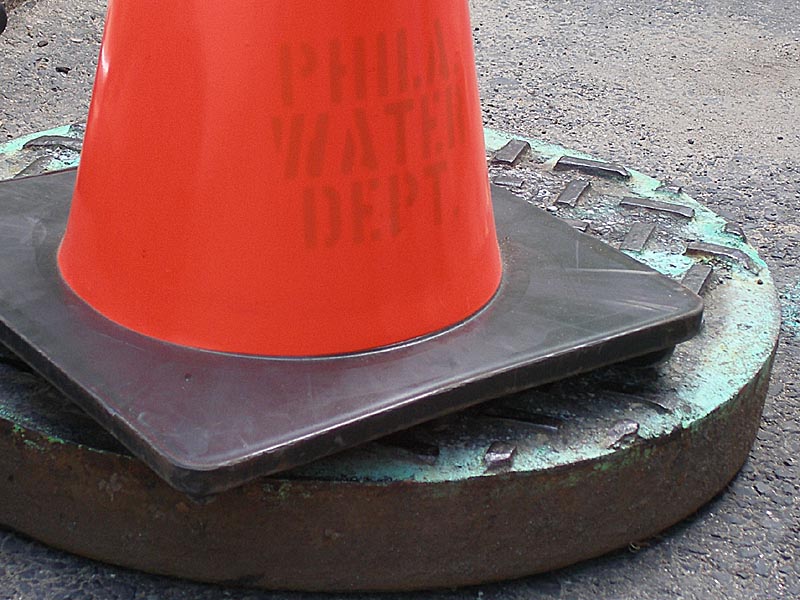This post first appeared on PhillyH2o in Fall 2008.
On September 15, 2008, I had a second chance to delve into Philadelphia’s underworld. Along with Charles Brown and Conrad Coldwell, PWD sewer inspectors, and Philadelphia Inquirer reporter Melissa Dribben and photographer John Costello, I entered a sewer under the University of Pennsylvania.
Built to encapsulate the former Beaver Creek, the sewer drained a large portion of both the Penn and Drexel University campuses, and it seemed that half the students were taking hot showers that morning. The flow was swift and the pipes (which were six feet wide and ranged from six to fifteen feet high) were steamy, with the temperature probably in the 80s and humidty seeming to be about 100 percent.
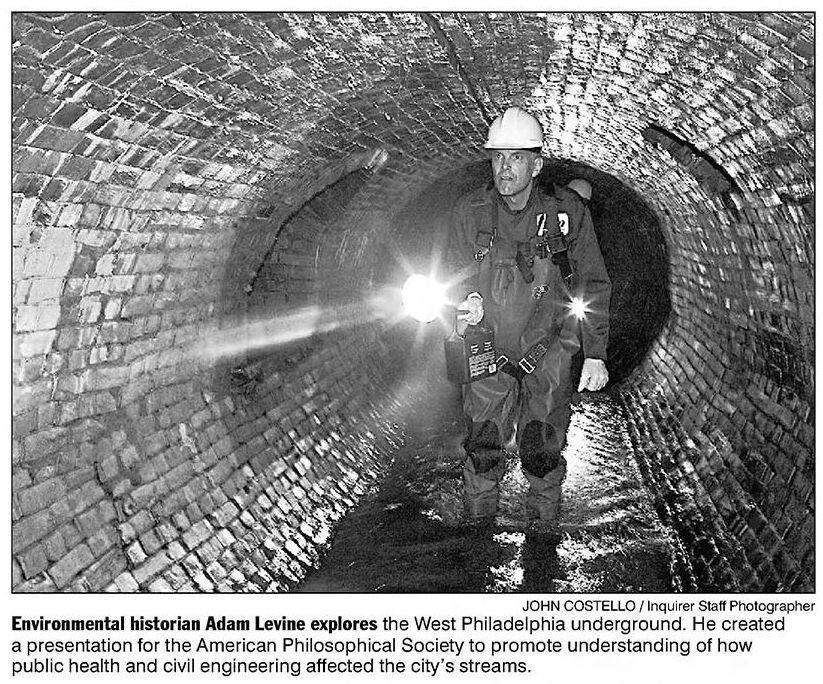
We were drenched with sweat after the hour-long journey, only managing to make it about about one block upstream before we turned around. John took pictures for Melissa’s article, which appeared in the September 21st edition of the paper. The article helped publicize events during the September 20-21 “Water Walk Weekend,” sponsored by the American Philosophical Society Museum, which featured a full-size, on-the-ground depiction of historic Dock Creek, by artist Winifred Lutz, and for which I gave a brief version of my Creek to Sewer lecture several times each day.
Special thanks go to the PWD Sewer Maintenance Exam Crew for making this sewer tour possible: foreman Joseph Hall, driver Stanley Robinson, sewer inspectors Brown and Coldwell, and laborer Angela Kenan.
Photographs by John Costello and Adam Levine
BELOW: To safely descend down the manhole ladder into the sewer, a tripod is set up over the hole with a safety rope attached. The rope is slowly let out as Sewer Inspector Conrad Coldwell descends. If he slips on the rungs, the rope will stop his fall.
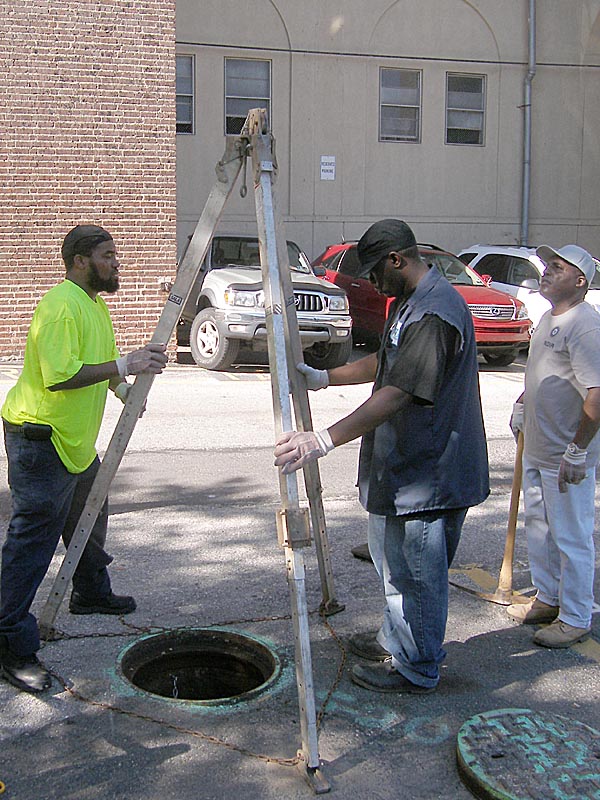
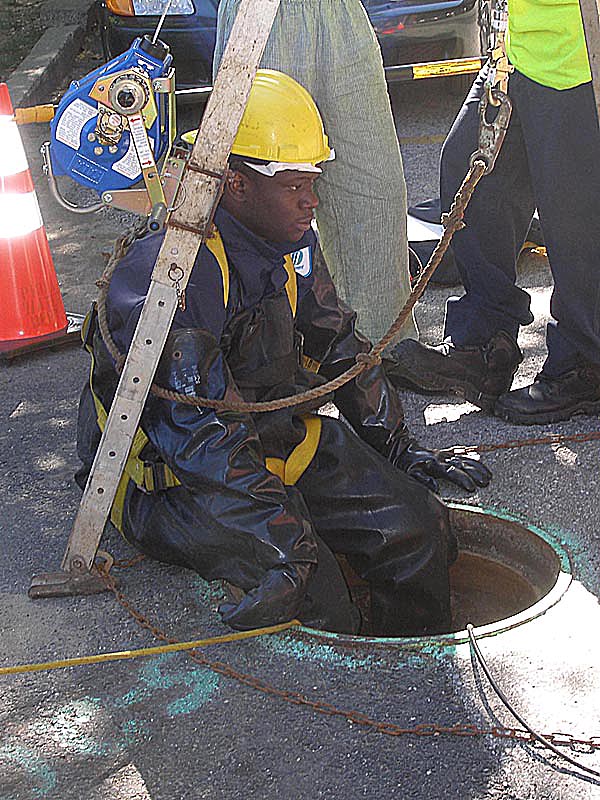
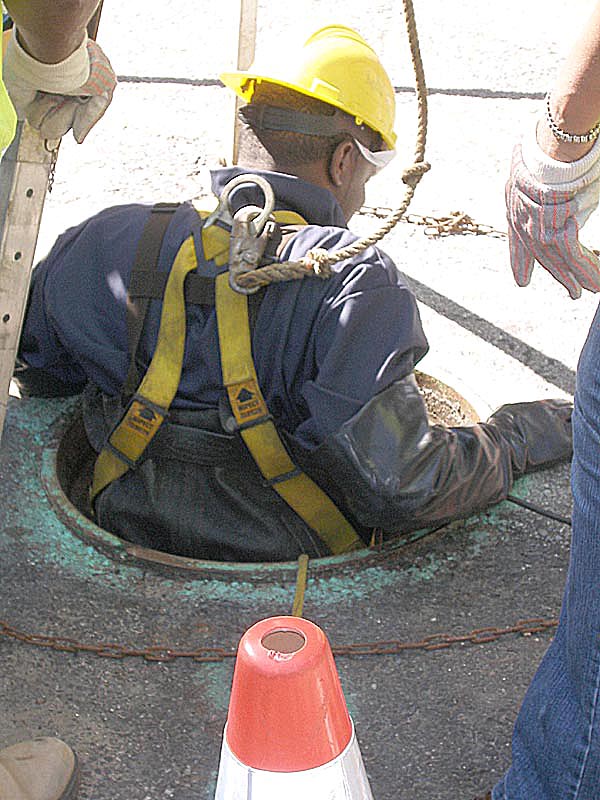

BELOW: Once down in the sewer, Conrad unhooks to help Melissa Dribben down to the bottom. The trash on the rung at her bottom foot marks the high flow during a recent storm. Walking in a sewer is more like slogging, sliding the boots along the bottom of pipe, keeping to the center, since the sides are sloped and often slippery.


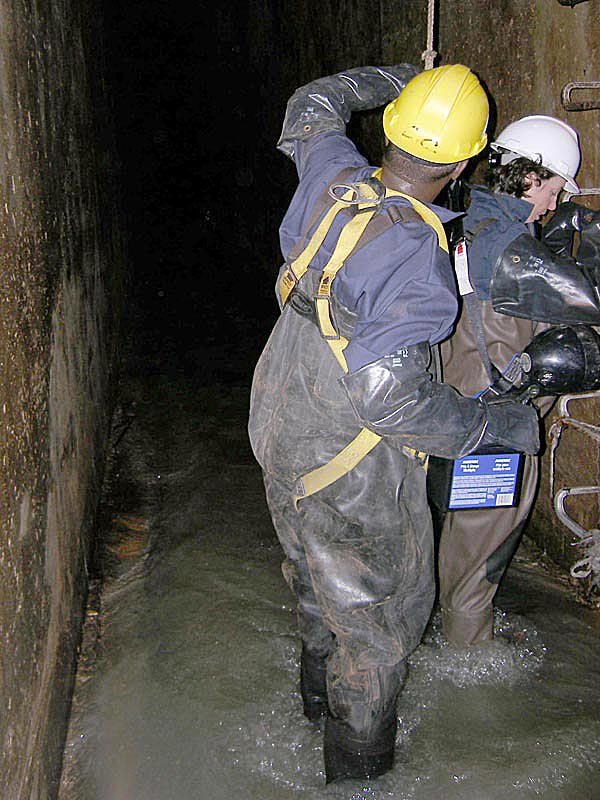
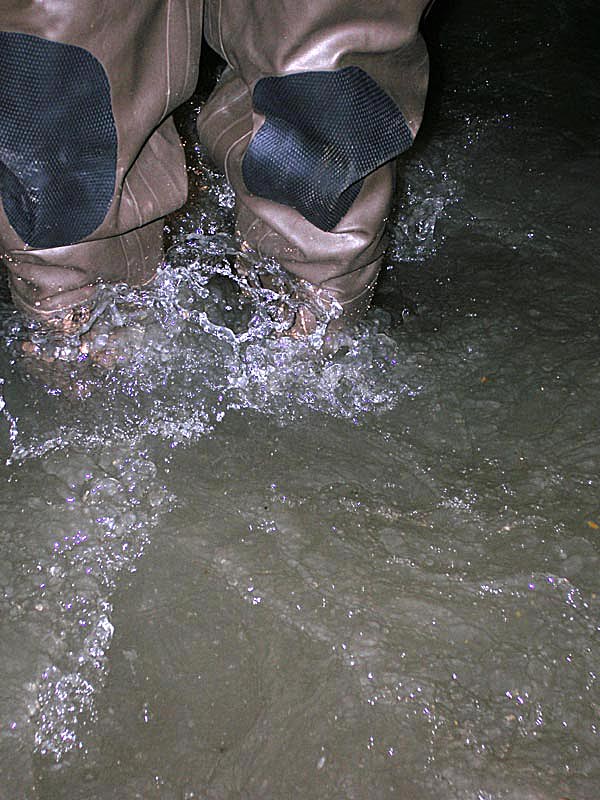
BELOW: Sewer Inspector Charles Brown, crawled up a 3-foot diameter storm sewer, and invited the three novices to try it, and we did. To get out of such a small pipe, the only way to go is backwards.
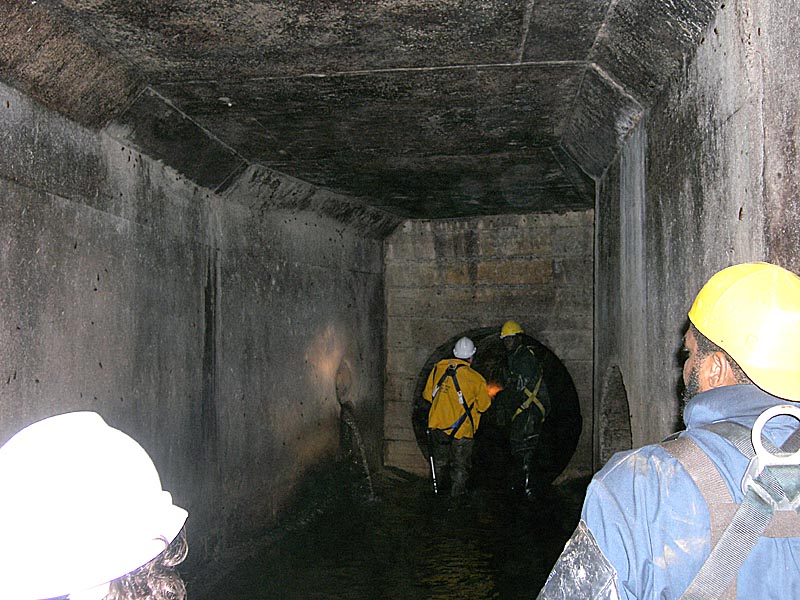
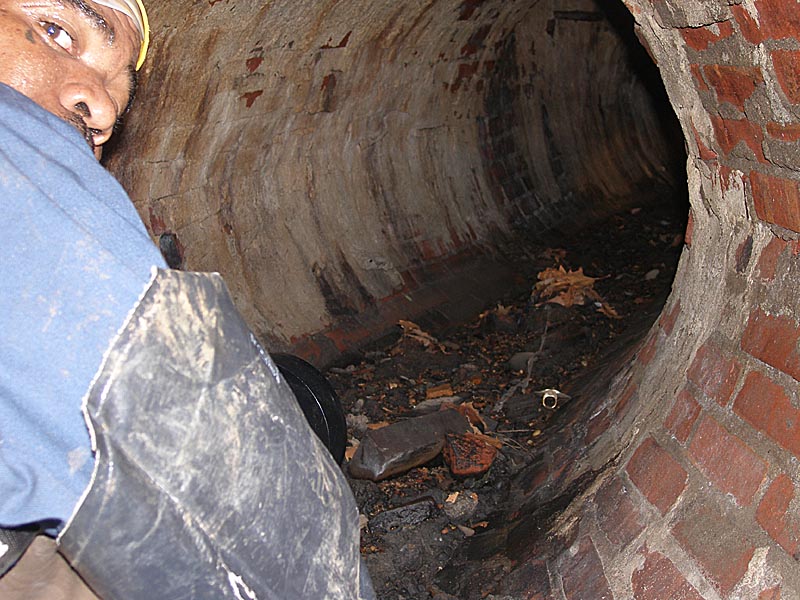
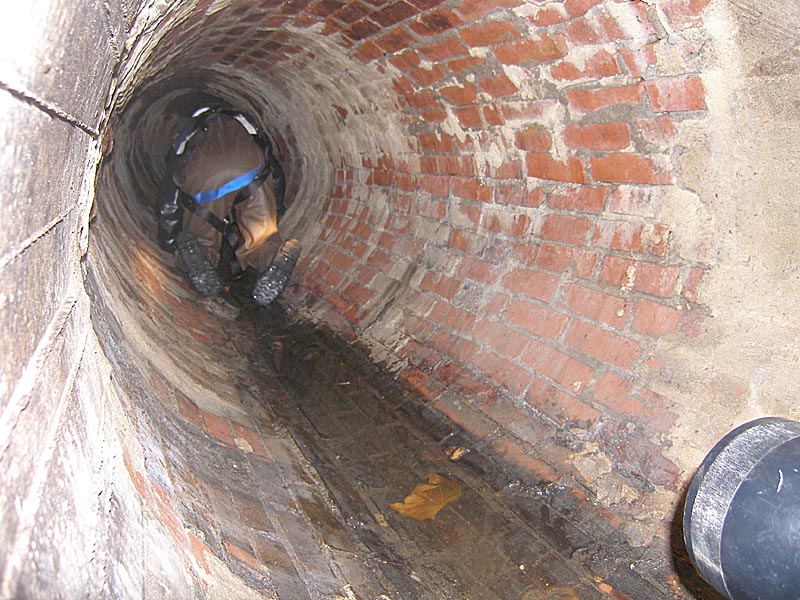
BELOW: Sewer inspectors often tell novices tall tales, to scare them, as Conrad seems to be doing here in the first photo to photographer John Costello.

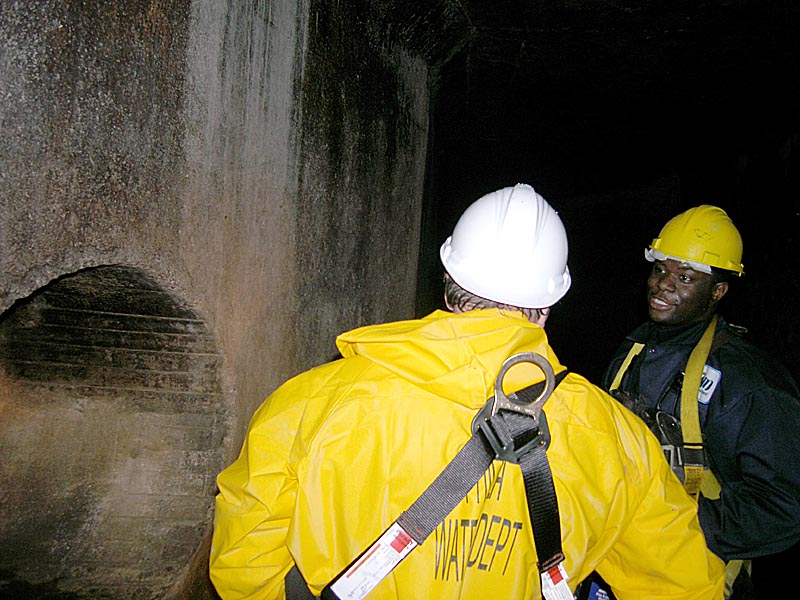
BELOW: On our short walk, we went from a 15′ high pipe into an 11′ pipe and then a 6′ pipe. Water bugs were everywhere – as Conrad said, we were in their home.


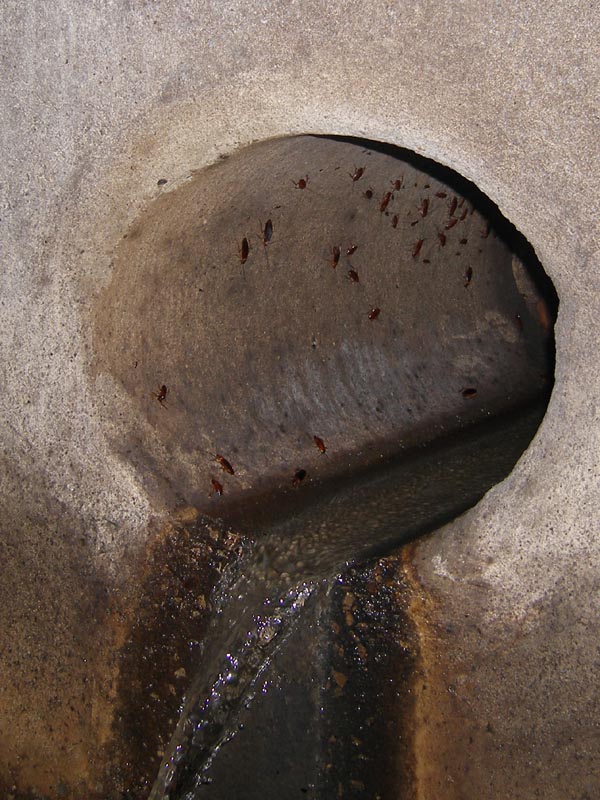
BELOW: The sewer was dark, except for three flashlights for the five of us. It was also very hot – we were drenched with sweat by the end of the hour underground. The bugs were large and in spite of my funny face, harmless. Note the sweat beads on my face.
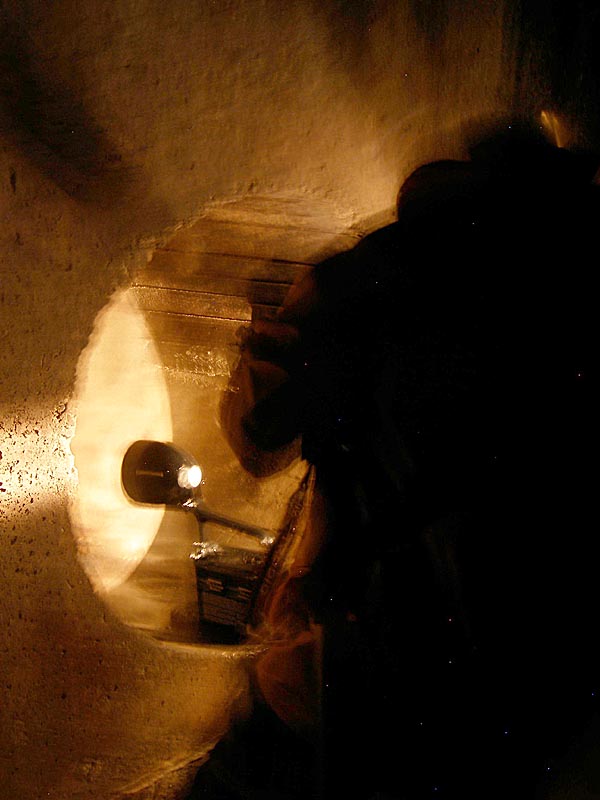
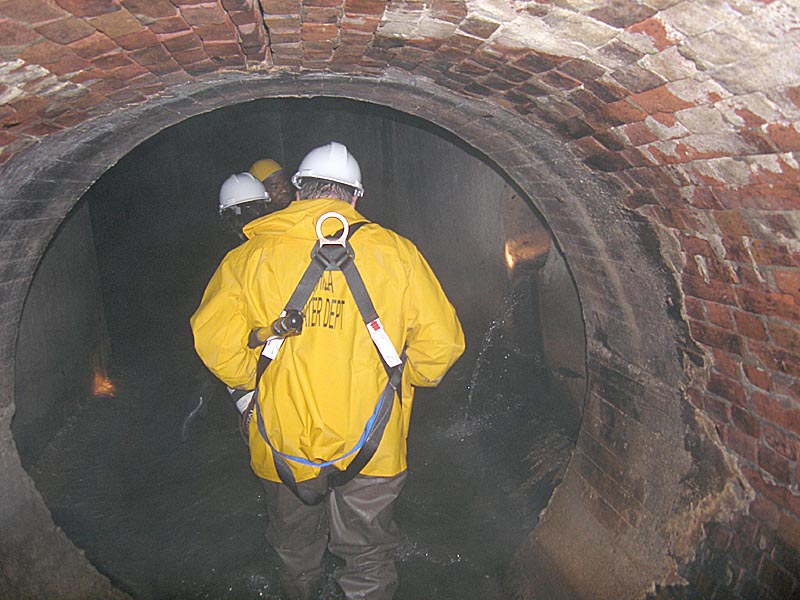
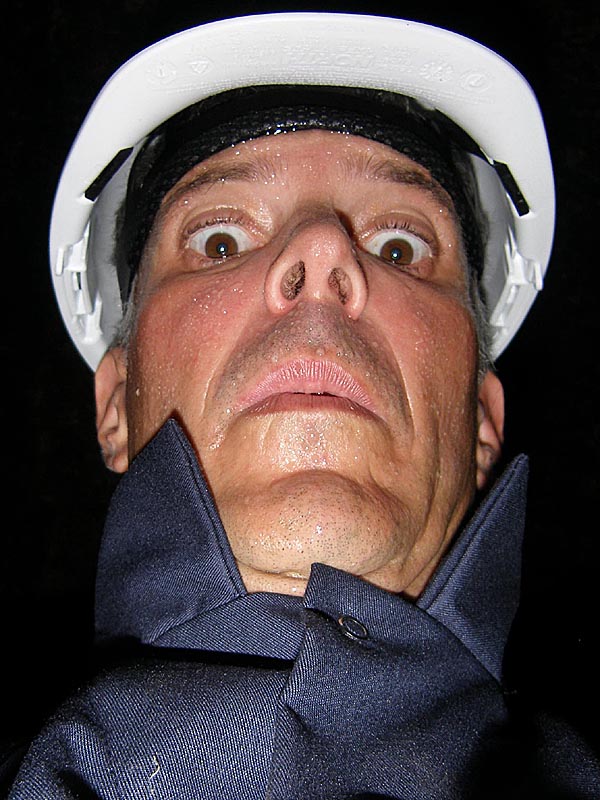
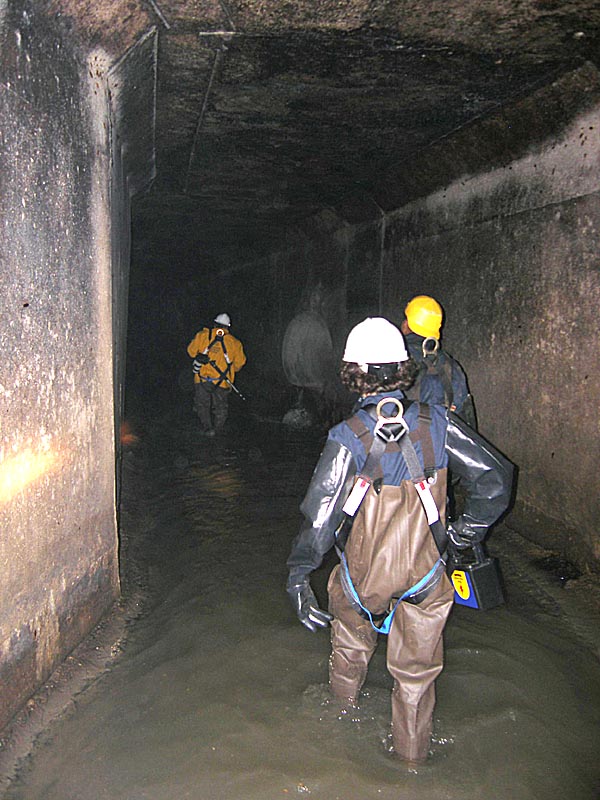
BELOW: By the end of our hour underground, the novices were ready to get back into the the fresh air and sunshine on the surface.

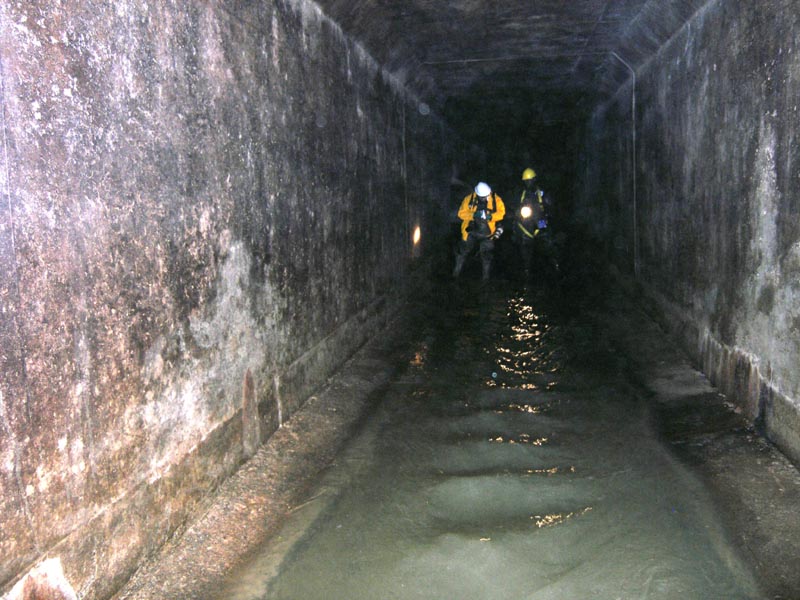
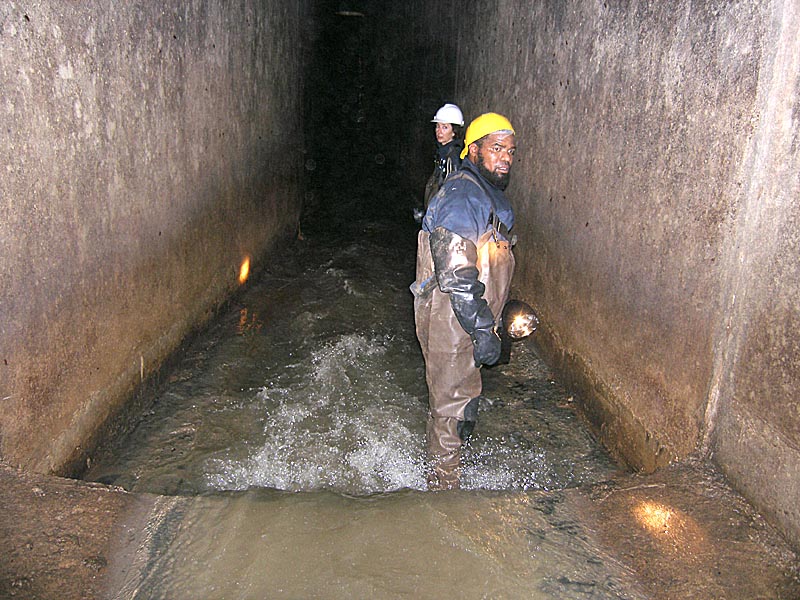

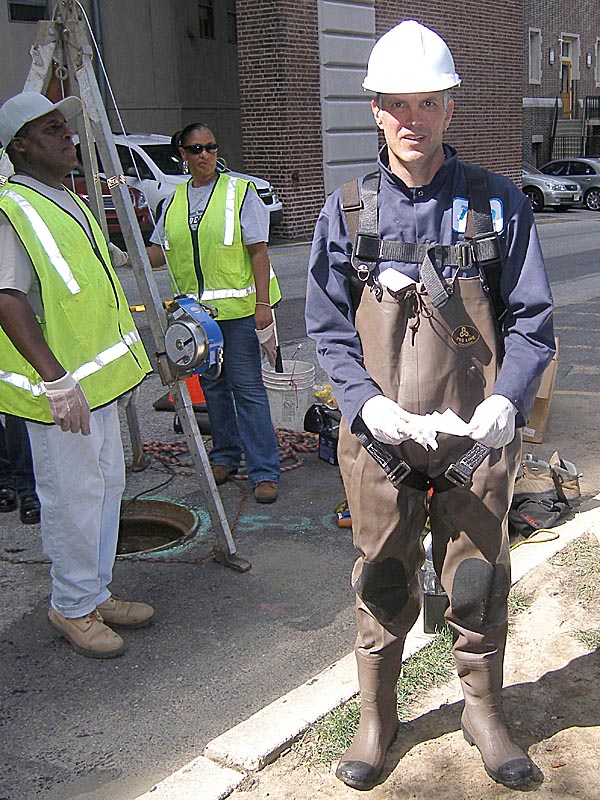
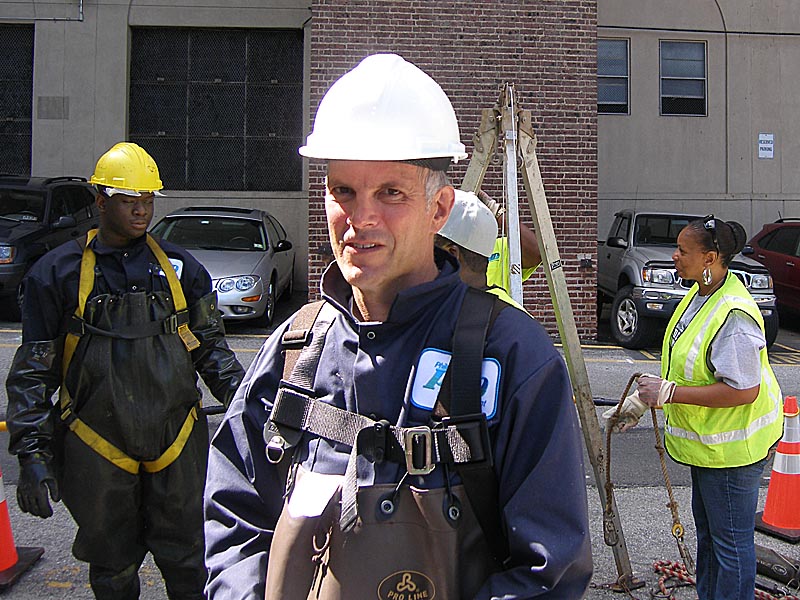
A sewer inspector’s job is just what it sounds like – to inspect the pipes and look for potential problems. Often, they are searching for the source of bad odors that have been reported on the surface.
Sewer maintenance crews such as the one that accompanied us on this tour do a dirty job that helps everyone in the city stay healthy. Preserving public health is why Philadelphia began supplying public water to its citizens in 1801, and more than 200 years later it remains the focus of the Philadelphia Water Department.
Without water treatment plants to make Schuylkill and Delaware water fit for human consumption; without 3,000 miles of pipes to deliver that water and an equal length of even larger pipes to carry away the “dirty water” (or sewage); and without three sewage treatment plants to capture and purify those wastes, a city as large and densely populated as Philadelphia would suffer terrible epidemics of water-borne disease.
Adam’s Other Sewer Tours
- The first tour, in 1997, was done for the Philadelphia City Paper.
- The third tour, in the Dobson’s Run Sewer in 2010, was made in street clothes while the pipe was still under construction.
- The fourth and last tour was with WHYY reporter Carolyn Beeler in fall of 2012, but I neglected to get a copy of the resulting audio report. I took no pictures of my own, and all that is left online is this teaser to the full story.
